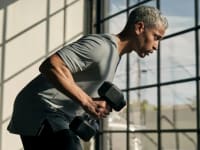14 handy things for a smoother post-op recovery
Add these to your shopping list to make the rehabilitation process easier after surgery.
Products are chosen independently by our editors. Purchases made through our links may earn us a commission.
After you have a medical operation or procedure, your recovery can run the gamut from uncomfortable to painful. Getting back on your feet (possibly literally) isn't always easy, which is why having a few tools at your disposal can make the process smoother and maybe even enjoyable. I should know: I had back surgery in 2015, and the only thing that got me through it was knowing I'd spend my recovery in my own bed with a good book and my dog.
You don't have to adopt a pet to make post-op time go better (not that I'd stop you). But you can make your recuperation as comfortable as possible with any number of these items for moving around the house, recovering in bed, and more.
1. A reacher-grabber tool to get a good grasp on things
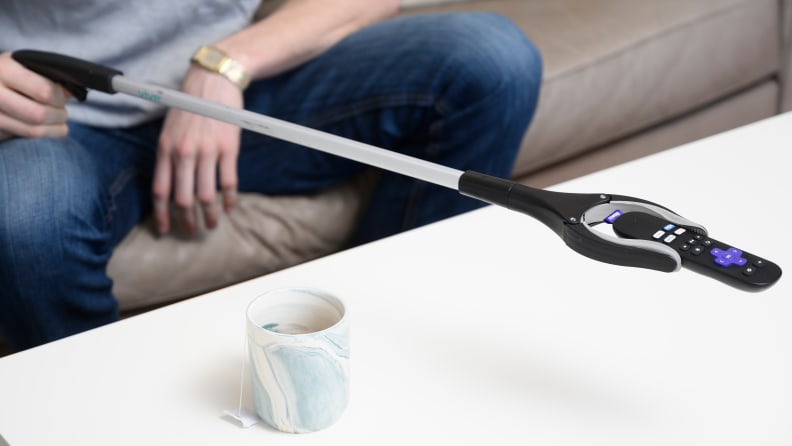
Prevent straining your muscles with the help of a handy reacher-grabber tool.
After surgery, you may have mobility restrictions, and at the minimum will need to move carefully, as to not aggravate your healing body. A sturdy reacher-grabber can help you retrieve something from the floor or off of a shelf, alleviating the need to bend down or twist your body in a potentially harmful way. It has a claw on one end and a trigger on the other, and can be invaluable for hard- or inconvenient-to-reach spaces.
I still use my own reach-grabber often. Even six years post-op, I live with chronic back pain and sometimes need a little help picking something up from the floor or grabbing a pair of socks from the bottom drawer of my nightstand. I keep my reacher against the dresser opposite my bed so I can access it easily.
We’ve tested a lot of reacher-grabbers and think the Vive Rotating Reacher is the best one because it’s easy to hold and has a strong grip around the items it picks up. It’s simple to adjust, too—the jaw rotates 90 degrees with a gentle twist.
Get the Vive Rotating Reacher at Amazon for $16.99
2. A good book to stay entertained
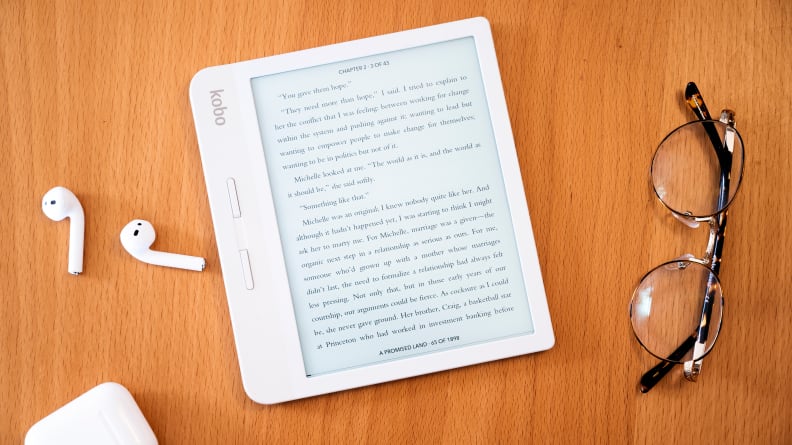
There's nothing like a good book.
Let’s face it, bedrest can be boring. A good story can help while away the time, whether for 10 minutes or a few hours. During my own recovery, the family I babysat for sent me a copy of R. J. Palacio’s middle-grade novel Wonder. The mom had read it with her own son and hoped it would enrich my bedrest. And it certainly did.
You don’t have to go out and buy a new book, especially as getting out and about may not be feasible in your post-op state. Plus, you may want reading material that is both lightweight and easy to access. In that case, it's worth considering an e-reader. We recommend Kobo e-readers, particularly the Kobo Libra H2O, which has a crisp, bright display, a lightweight feel, and is waterproof. Those partial to Amazon may be interested in the Kindle Paperwhite, which provides access to the retailer's wide assortment of books, magazines, and audiobooks. Each e-reader also has Overdrive capability, which means you can borrow books from your local library if you don’t want to buy a bunch of new ones.
If you prefer listening to your books, we recommend Audible. The huge selection of audiobooks includes Audible Originals like documentaries and podcasts, in addition to other titles. You can listen to the content on all of your devices via the Audible app, so you can access the material wherever you bring along your phone (say, on those post-op follow-up appointments).
- Get the Kobo Libra H2O from Kobo for $169.99
- Get the Kindle Paperwhite on Amazon for $129.99
- Sign up for a 30-day Audible trial and $7.95 after that
3. A smart speaker as a personal assistant
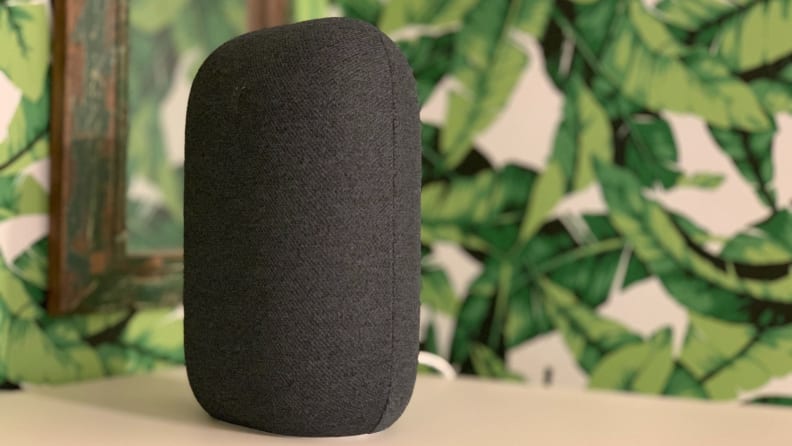
This voice-activated speaker makes daily tasks easier to complete while sitting down.
Sometimes, we need a little helping hand from technology. Smart speakers can help with the little tasks of the day: make calls, generate your shopping list, even offer entertainment. They can also make a day of recovery easier, even by one task.
We tested the best smart speakers and awarded best value to the Google Nest Audio. It boasts crisp sound and a stylish design. It has a fast Google Assistant response time, which comes in handy when you need to set an alarm to take medication or answer a loved one who is checking in. You have a choice of five colors for about $100.
Get the Google Nest Audio from Best Buy for $99.99
4. A great pillow to support your head

Rest is pertinent to the recovery process.
Good sleep is essential while in recovery, because the best healing happens when you're not awake. Given that you'll likely be in bed a lot during this time, you deserve bedding that gives you the most pleasant rest. Comfort starts from the top down, with your pillow being essential for promoting good spinal alignment. We’ve evaluated a ton of bed pillows—including ones for back sleepers, stomach sleepers, and side sleepers. For most positions (and if you can't get comfortable in your usual one), we recommend the Coop Home Goods Original Pillow, which has adjustable filling so you can find your ideal height and is fully machine-washable.
Get the Coop Home Goods Original Pillow from Amazon for $61.99
5. A small pillow to keep your knees and back happy
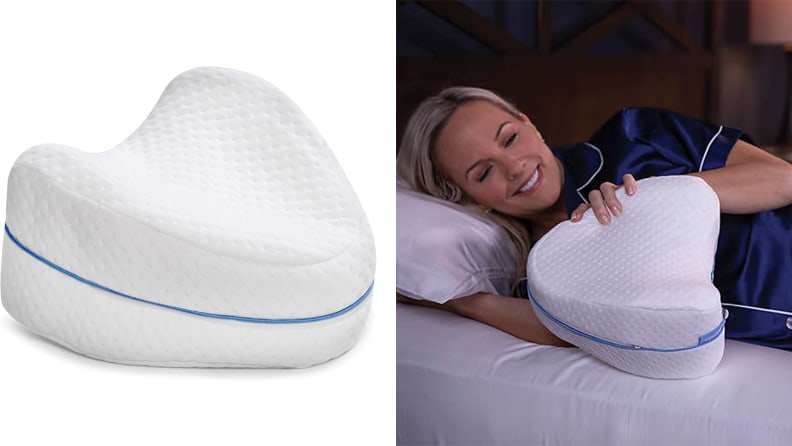
A pillow that can support your neck and provide comfort to your head as well.
Some people like using pillows as a tool to promote good posture during recovery. Back sleepers may benefit from a prop beneath the knees, but for me, as a side sleeper, I place small round pillow between my knees, which I started after my surgery and now can’t imagine my nightly routine without.
The Contour Legacy Leg & Knee Foam Support Pillow is a solid choice for comfortable side sleeping. It’s better than your average memory foam pillow—the ventilated memory foam allows for air circulation to prevent you from feeling overheated. Writes a reviewer: “I have been using Contour Living pillows since my knee replacement in 2001 and have found them all to be good, but this newest one is the best one yet. I get a good night’s sleep without any joint pain from either my knees or hips which have also been replaced.”
Get the Contour Legacy Leg & Knee Foam Support Pillow from Amazon for $19.99
6. A soft comforter for a good night’s rest
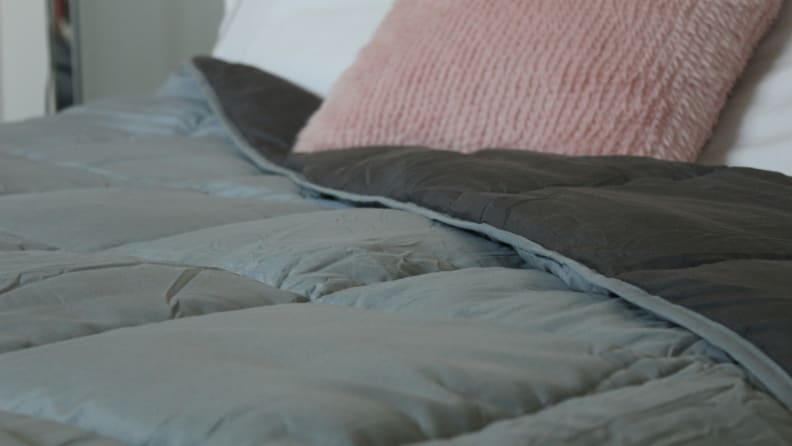
Ease into this hypoallergenic down quilted comforter.
Another bedding improvement that won't cost you a lot is a cozy cover, in the form of the best comforter we've tested, the Linenspa All-Season Down Alternative Quilted Comforter. It has a soft microfiber exterior and down alternative fill, making it machine-washable for those with allergies and to keep it nicer while you're giving it a lot of use. It’s also stylish, with most of its offerings being two-toned and reversible—and surprisingly affordable.
You’ll also want sheets to keep you comfortable but not damp throughout the nights (and days). Brooklinen makes our all-time favorite sheet set, which resists wrinkles and helps maintain a comfortable body temperature.
- Get the Linenspa All-Season Down Alternative Quilted Comforter at Amazon starting at $29.99
- Get the Luxe Core Sheet set at Brooklinen starting at $135
7. A pre-made meal kit or meal delivery service to stay fed
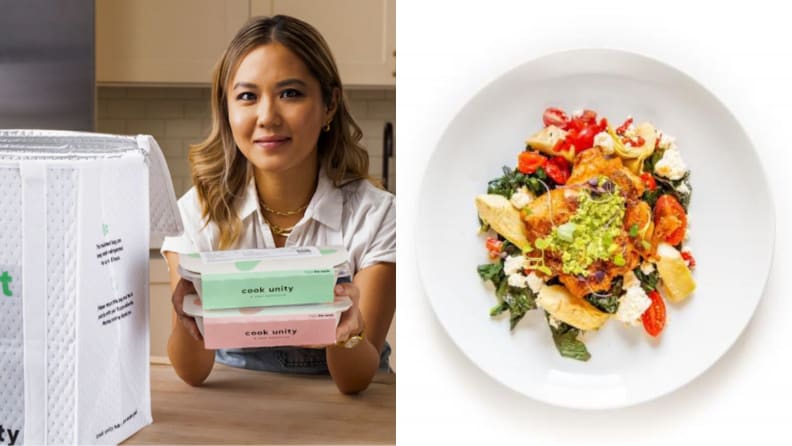
CookUnity is the best pre-made meal kit we've tested.
We’ve talked about keeping the body rested, now let’s keep the body fed. You may not want (or be able) to cook, so this is where a pre-made meal kit service could be a godsend.
Pre-made meal kit services include CookUnity, Snap Kitchen, and Splendid Spoon, among others, with the food coming ready to eat to your door (save for some microwaving). All can be great for the right person, but we think CookUnity is the best of them all. In tests, we found the food to be fresh, made with high-quality ingredients, and very tasty. CookUnity earned additional points for having hundreds of options every week, to suit every dietary need and random craving.
If smoothies are more your post-op speed, Daily Harvest ships the ingredients to you, so all you have to do is dump 'em in to a blender and sip to your heart's content.
8. A dazzling fruit platter to snack between meals
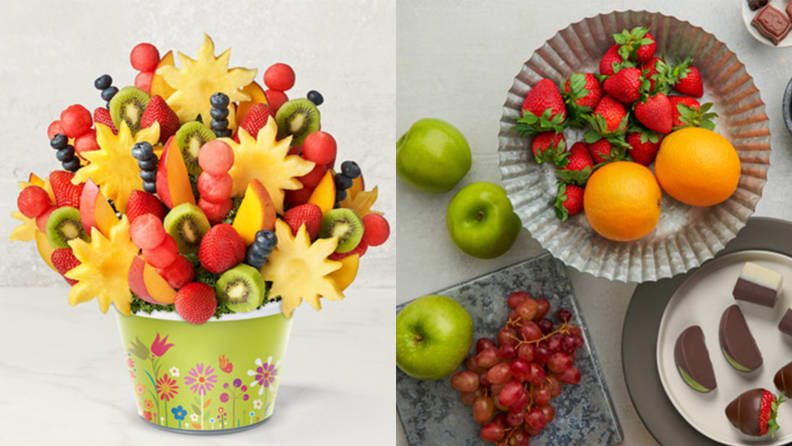
A sweet treat that's healthy for you too.
Fancy a snack in between your (delivered) meals? Recovery should be sweet, and a little treat can make this often monotonous time a bit more palatable. Keep your energy levels up with a snack that is light, healthy, and relatively mess-free, like a fruit platter. (Just take caution with grapefruit if you’ve had certain procedures, as some medications can interact with it.)
I’d say this is a good time to indulge in a spread from Edible Arrangements. Treat yourself, or drop the hint for someone to splurge on you! “To be able to send a beautiful and fun arrangement around the states is so convenient, especially having family [on] different coasts. I have not had an issue yet and everyone is always pleased,” writes a reviewer.
9. A good water bottle to stave off thirst
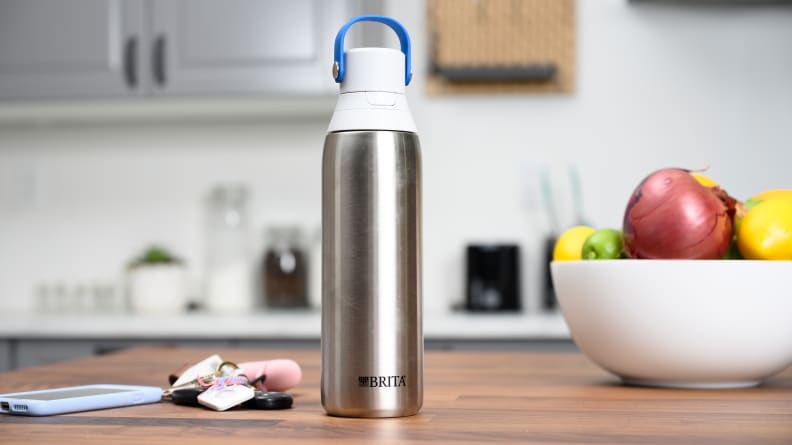
Avoid frequent trips to the kitchen in order to refill your water with a 20 oz. insulated bottle.
Staying hydrated is always in order, but especially while you’re healing—and you might have pills you need to take, as well. Keep a drink on hand at all times with the best water bottle we've tested, the Brita Steel Filtering Water Bottle. Its stainless steel body holds 20 ounces of pure refreshing goodness and does a good job keeping the liquid cold. Like the brand's popular water pitchers, it has a built-in filtration system that keeps the water tasty and clean.
Get the Brita Steel Filtering Water Bottle at Amazon for $24.99
10. A hobby that’s not physically demanding
Finding a low-impact, low-stress activity can keep your brain feeling stimulated while your body does its healing. (For example, Margaret Mitchell wrote Gone With The Wind while recovering from an ankle injury.)
I’m an advocate for spending some part of the day away from screens, if possible. Let your mind feel rested yet rejuvenated with a hobby that is not too intense on the body and does not involve any complicated set-up or clean-up. It’s rewarding to say, “Hey, look, I made something”—whatever that something is. Not only will you feel productive during your time in recovery, you’ll have a homemade craft to show for it.
When my mom was recovering from breast cancer surgery years ago, she picked up origami, which she loves doing to this day. Origami is a low-maintenance activity that parents and kids can enjoy together, too. Today she likes sitting at the kitchen table with her One-A-Day Origami Calendar and creating something new every day. She told me she wouldn’t have picked up origami had it not been for her operation, and I can’t picture her life without it.
An option for bringing out your inner artist is a kit from Let’s Make Art. Each comes with paper, paint, and instructions to create a watercolor or acrylic masterpiece or lettering project.
11. Slippers to get you (gradually) up and about
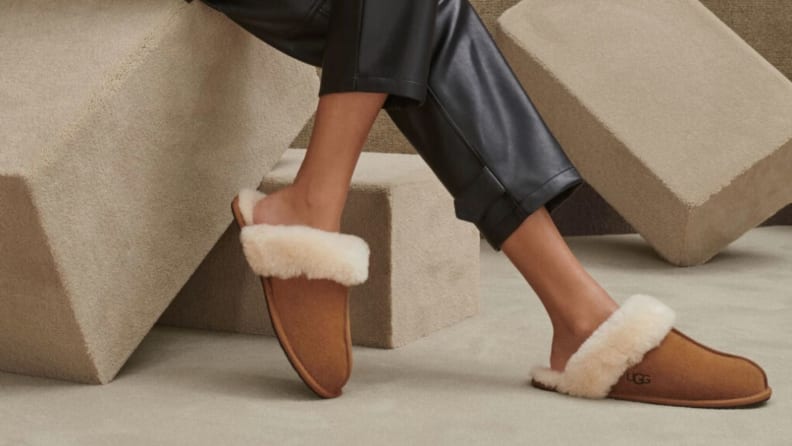
These comfy UGG slippers make mobility more achievable and are easy to slip on and off.
I got discharged from my outpatient operation with instructions to move around throughout the following days as best I could. You need to rest, but too much immobility can lead to blood clots and other non-favorable stuff. Start small by walking around the house in a sturdy pair of slippers.
When Reviewed tested the best women's slippers, we selected the Ugg Scuffette II as the cream of the crop. They’re simple to slip on and take off, which is important for a recovering patient. And they deliver on the comfort factor—our tester called them a “hug for your feet.” In men's sizes, the Ugg Scuff offers a similarly versatile indoor-outdoor, slip-on style (if not quite as fluffy).
- Get the Ugg Scuffette II Slipper in women's sizes for $120
- Get the Ugg Scuff Slipper in men's sizes for $80
12. A good robe with pockets to keep the essentials on you

This insulated plush robe from Nordstrom feels just as snug as a blanket.
To go with those slippers? A nice comfy bathrobe, of course, to keep your healing body insulated whenever you get out of bed. Our top pick of the best robes for women is the Bliss Plush Robe from Nordstrom, which lives up to its name and has deep side pockets for stashing items you want at arm's reach. For men, the Plush Jacquard Robe should be just as soft and more visually interesting, with similarly sizable pockets.
- Get the Bliss Plush Robe from Nordstrom for $69
- Get the Plush Jacquard Robe in men's sizes from Nordstrom for $89
13. Back support cushion for chair or car
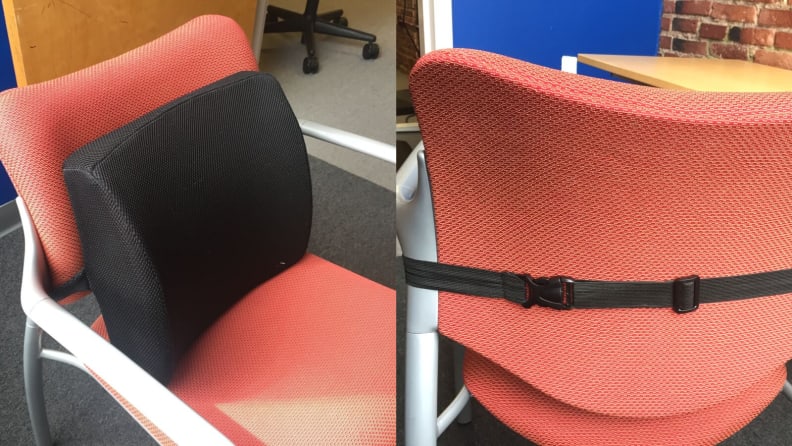
This lumbar support back cushion can be strapped onto any seat of your choice.
Good posture is paramount to the body, even more so while in a recovery period.
Help yourself achieve good posture by investing in a sturdy back support cushion. We’re into the LoveHome Memory Foam Lumbar Support Back Cushion. It attaches to the back of a chair with adjustable straps because not all chairs are created equal. Weighing under a pound and a half, it’s compact so you can smoothly take it with you to the car (or to another seat).
Get the LoveHome Memory Foam Lumbar Support Back Cushion on Amazon for $21.24
14. An upgraded cane tip to keep your cane at the ready
If you’re using a cane, you don’t have to worry about bending or reaching to grab it if it’s standing upright in a specially designed integrated stand that replaces the usual round tip. Because my back pain is so sporadic, I want immediate access to my assistive devices. My own cane stands proudly in its four-pronged tip opposite my bed, next to the reacher-grabber. It’s a comforting feeling knowing that my cane is ready as soon as I need it.
A great option is the Carex Self Standing Cane Tip. At 7.6 ounces—that’s less than half a pound—it attaches easily to a cane and keeps it upright without making it much heavier when you're using the cane to walk. It’s affordable without compromising on quality. Reviewers appreciate the stability that the rubberized grip provides. One writes: “This popped right onto the tip of my cane very easily. The four tips give so much more stability than just the regular rubber tip. I feel more confident with it.”

